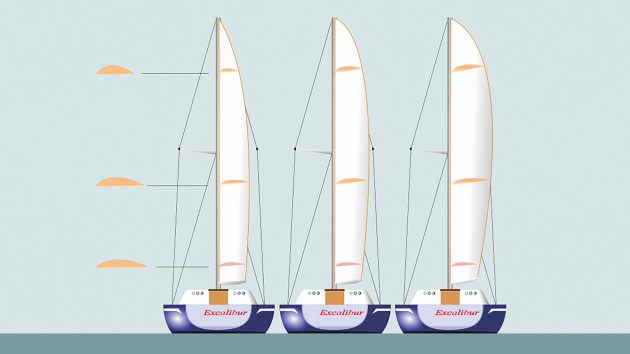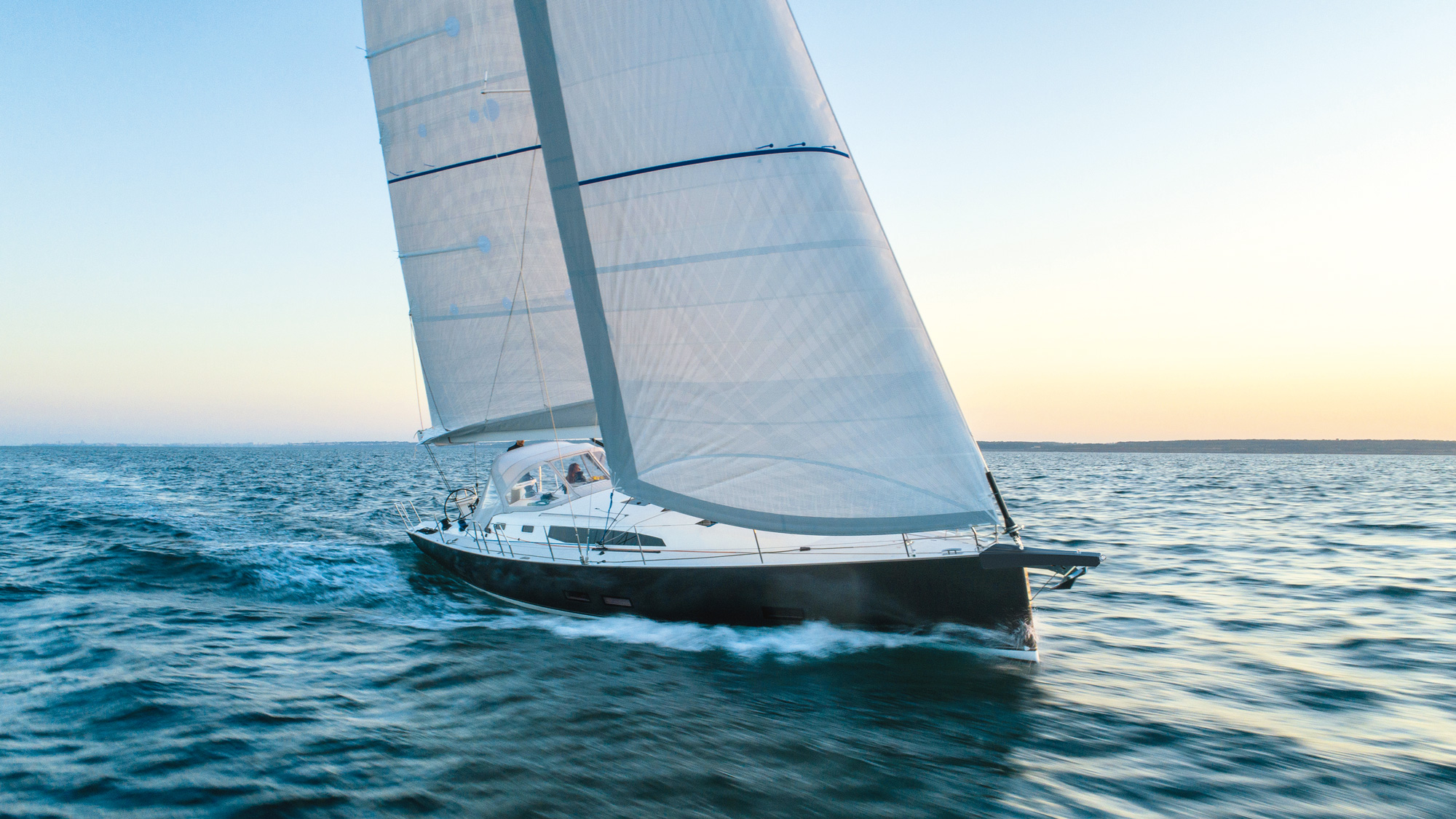It’s troublesome to explain ‘right’ sail form, however the three most vital issues to contemplate are: sail draft (the fullness of the sail), draft place, and twist (managed by the kicker/vang and leech pressure).
Sail draft
Sail draft (chord depth) is an imaginary line from luff to leech referred to as the chord. Chord depth can then be expressed because the ratio share between the utmost draft (d) and chord size (c). Draft stripes or seams within the sail can be utilized to estimate the depth. It’s fairly troublesome to measure, so cruising sailors will use their eyes and expertise to estimate draft.

Permitting the sail to fall extra out to leeward on the prime than within the decrease elements is known as ‘twisting the sail’. Picture: c/o Fernhurst Books
Draft place
The space from the luff to the place you discover the utmost draft within the sail is known as the draft place. Draft ahead offers a decrease carry/drag ratio, and you’ll’t level as excessive as with the draft aft. However it’s a extra forgiving form, making it simpler to steer and giving a wider ‘groove’. The ‘groove’ is a slim course vary decided by a mix of your sail trim, boatspeed and pointing skill. As soon as ‘within the groove’ your boat comes alive and travels at most effectivity. Draft ahead is due to this fact extra appropriate in rougher situations or for a much less skilled helmsman.
Draft aft offers a greater carry/drag ratio than draft ahead, permitting you to level greater. The sail will, although, stall extra simply if the boat is just not steered accurately. Draft aft sail form is due to this fact greatest in simpler situations (medium winds and flat seas).
The form of the sail’s entry might be essential particularly for the genoa (jib), which has no mast in entrance of it to have an effect on the airflow. A spherical entry reduces the pointing skill however is much less affected by adjustments in angle of incidence, making it simpler to steer.

Completely different draft positions (proven in white), illustrating their affect on sail trim efficiency. Picture: c/o Fernhurst Books
A advantageous entry permits greater pointing however is much less tolerant to adjustments in angle of assault which makes steering extra demanding. The forestay and halyard pressure additionally have an effect on the fullness of the sail entry.
Twist
True wind velocity will increase with top, so the upper above deck stage we measure, the stronger it will get.
Boatspeed-generated wind stays fixed with top. Including the vectors collectively exhibits that the resultant obvious wind shifts additional aft and will increase in energy with top. You due to this fact need to trim the sail in such a manner that the wind’s angle of incidence to the sail will likely be fixed from the foot to the top of the sail.
That is performed by letting the sail fall extra out to leeward on the prime than within the decrease elements, referred to as ‘twisting the sail’. Mainsail twist is primarily adjusted by the kicking strap (kicker or vang), the mainsheet and the place of the traveller on the monitor. The twist of the genoa (jib), in the meantime, is adjusted by transferring the sail’s sheeting level, and is affected by sheet pressure.
Vertical Sail Form
The sail ought to have somewhat extra fullness within the higher elements to be extra environment friendly. This may be troublesome to guage and is of extra curiosity to the eager racing yachtsman. Most cruising yachtsmen and lots of racers don’t attempt to fine-tune the sails vertically past the curvature the sailmaker has constructed into the sails.
However in sturdy winds the higher elements of the sails must be flattened so as to keep away from extreme heeling forces. This can be a frequent drawback for many yachtsmen and often extra twist will likely be employed.

Airflow is bent because of the mainsail which permits the genoa to be sheeted at a wider angle to the boat’s centreline. Picture: c/o Fernhurst Books
Genoa trim
The genoa (jib) is commonly thought of to be the boat’s ‘engine’. The mainsail can then be seen as a form of trim flap that offers the boat its pointing skill and controls the helm stability. This shouldn’t be taken too actually as every sail’s perform overlaps with the opposite. Why is the genoa so vital?
The genoa doesn’t have a mast in entrance of it to disturb the airflow and create vortices and drag. It may be set at a wider angle to the wind than could be anticipated, because of the ‘upwash’.
Upwash is the change of airflow path created forward of a sail (or an object) earlier than the movement has reached the sail (the article) itself. The genoa is in the primary’s upwash space and advantages from a wider wind angle (will get a ‘carry’) and might be sheeted additional out from the boat’s centreline.
Conversely the mainsail features within the genoa’s ‘backwash’ and have to be sheeted in tougher than if it was working alone. Trim the genoa for driving pressure and the primary primarily to acquire an accurate helm stability.
The genoas are named Genoa No.1, 2, 3, and so forth, with reducing measurement. Genoa 3 is successfully an ordinary jib. The dimensions of the genoa is given in sq. ft or sq. metres, however additionally it is outlined by the size of LP (luff perpendicular).
We describe genoa sizes by the diploma of ‘overlap’. This can be a measure of how a lot the sail overlaps the mast. A standard worth for Genoa No.1 is 150%, for Genoa No.2 130-140%, and for Genoa 3 about 100% (that’s, roughly no overlap).
Loved studying this?
A subscription to Yachting Month-to-month journal prices round 40% lower than the duvet worth.
Print and digital editions are available through Magazines Direct – where you can also find the latest deals.
YM is full of data that can assist you get essentially the most out of your time on the water.
-
-
- Take your seamanship to the subsequent stage with ideas, recommendation and expertise from our specialists
- Neutral in-depth opinions of the newest yachts and tools
- Cruising guides that can assist you attain these dream locations
-
Observe us on Facebook, Twitter and Instagram.

